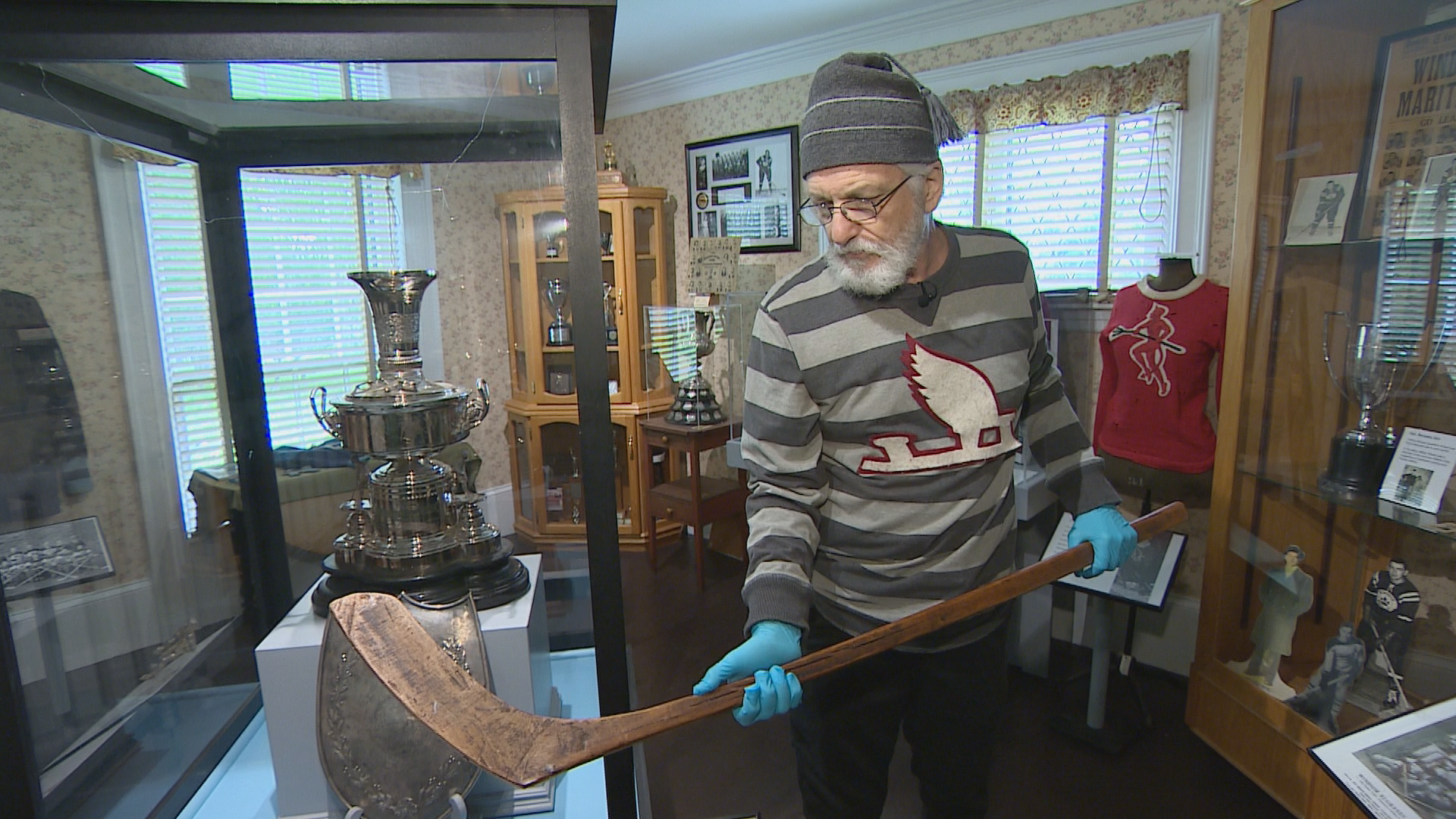An historic hockey stick has returned home to Nova Scotia and it’s highlighting the Mi’kmaw roots to the game.

An historian has unlocked the origins of the Caruk Stick, tracing it back to Canada’s hockey boom in the late 19th century. It has returned home to Nova Scotia and is now on display at the Birthplace of Hockey Museum in Windsor.
David Foster Carter calls himself the Hockey Holmes Heritage Detective and says the 127-year-old Caruk could be the oldest-known, Mi’kmaw-made stick.
He spent more than two years working on his assessment of the Caruk.
“The blade itself tells me it’s an exact measure that came out of Ontario Hockey Association rules for 1896,” he says. “It’s exactly 13 inches long and three inches wide — and that rule came into effect in 1896.”
Carter says the assessment helps to establish Nova Scotia’s roots in the game.
“It’s a forgotten story in large part,” he says. “In the Mi’kmaw community, there are lots of strong traditions about stick making. There are people that still remember sticks being made.”
Hockey sticks like the Caruk were exported across the country. Museum interpreter Lucy Burgess says they were initially crafted out of Ironwood or Hornbeam.
“The Mi’kmaw were making so many hockey sticks that they were just going through these trees,” says Burgess. “Luckily it’s not extinct today, but after a while, they did have to switch to another type of tree called yellow birch.”
Burgess says the Mi’kmaw hockey stick was the most popular in the game’s early beginnings. The lumber was known for its durability.
“They were really the best sticks,” she explains. “It’s because of how they were constructed using the root and trunk of the tree. They were one solid piece and it made them extremely sturdy.”
Cheryl Maloney and her family have extensively researched the connection of their Mi’kmaq ancestors to hockey.
Together they created their documentary The Game of Hockey – A Mi’kmaw Story.
“One of the pieces of research we did on the hockey stick was an excerpt from 1398,” she says. “They talked about finding these people playing a game on ice with the roots of trees back in 1398.”
She says the more research they did, the more they learned about the Mi’kmaw contributions to the sport.
They even uncovered a family connection to the craftmanship behind the legendary sticks.
“My son was in a museum looking at hockey sticks made by Mi’kmaw, and he was actually holding one that was made by his great-great grandfather — Alexander Cope,” Maloney says. “His direct ancestors played a role in the Mi’kmaw’s contributions to not just the hockey stick, but the game.”
She says there are many reasons why the family history was lost, including memories stolen during the residential school era.
“The story of Mi’kmaw and hockey — it didn’t carry any weight unless it was written in English by non-Indigenous peoples, and then it carried value,” says Maloney.

Ahead of the National Day for Truth and Reconciliation on September 30th, she says learning more about the history of hockey is a way to reflect.
“I don’t say that Windsor created hockey or Dartmouth, or Halifax,” she says. “I say hockey was created in Mi’kma’ki, and it grew from the earth, and it grew from our earth, and it’s something we share.”
Carter will hold an interactive presentation at The Birthplace of Hockey Museum in Windsor on Friday from 2 p.m. to 4 p.m. The Caruk Stick can be seen until October 1st.
Carter hopes now that this hockey stick is home for awhile, it will unlock more stories of Canada’s most popular sport.
He’s already started to see chatter online.
“One person says they knew of a place called Hockey Stick Hill,” he says. “Can you imagine anything better than a place called Hockey Stick Hill?”






Comments